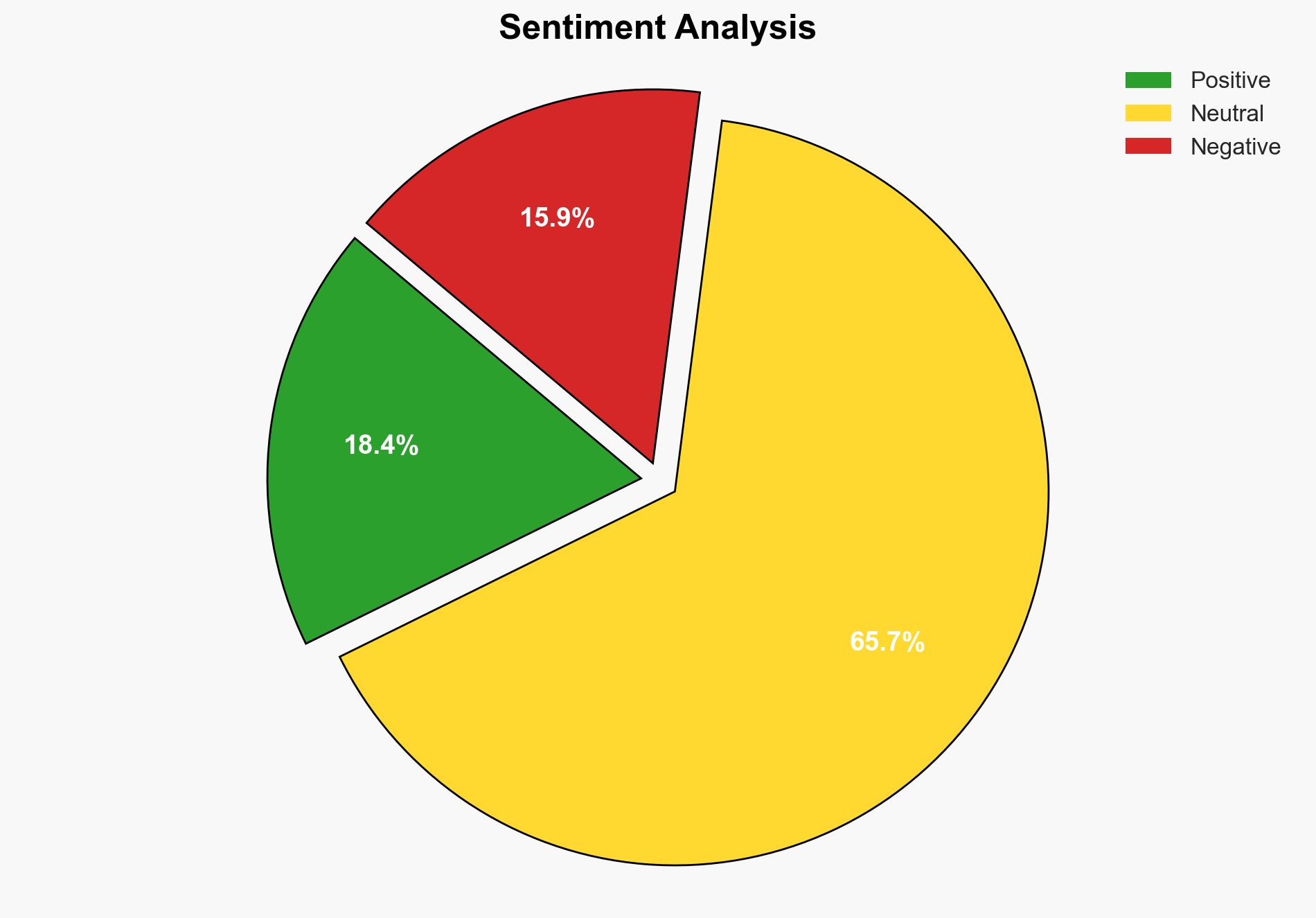The Insecurity of Telecom Stacks in the Wake of Salt Typhoon – Soatok.blog
Published on: 2025-03-12
Intelligence Report: The Insecurity of Telecom Stacks in the Wake of Salt Typhoon – Soatok.blog
1. BLUF (Bottom Line Up Front)
The Salt Typhoon breach highlights critical vulnerabilities within telecom stacks, particularly those utilizing open-source software. The incident underscores the need for enhanced security measures and responsible disclosure practices among developers and companies. Immediate attention is required to address these vulnerabilities to prevent potential exploitation by malicious actors.
2. Detailed Analysis
The following structured analytic techniques have been applied for this analysis:
General Analysis
The Salt Typhoon breach involved unauthorized access to a mobile telecommunication company’s network, exploiting vulnerabilities in open-source software projects. The breach was facilitated by a buffer overflow vulnerability in the XML-RPC library of the FreeSWITCH software, allowing remote code execution. Despite the discovery and reporting of this vulnerability, the response from the developers was delayed, leaving systems exposed. This incident reflects systemic issues in vulnerability management and the need for timely security updates.
3. Implications and Strategic Risks
The breach poses significant risks to national security and economic interests, as telecom infrastructures are critical to communication and data transmission. The potential for exploitation by state-affiliated groups or independent hackers could lead to data breaches, espionage, and disruption of services. The incident also highlights the broader trend of vulnerabilities in open-source software, which, if left unaddressed, could undermine public trust and stability in digital communications.
4. Recommendations and Outlook
Recommendations:
- Implement rigorous security audits and vulnerability assessments for telecom software, particularly open-source projects.
- Establish mandatory responsible disclosure policies and rapid response protocols for identified vulnerabilities.
- Encourage collaboration between government agencies and the private sector to enhance cybersecurity frameworks.
Outlook:
In the best-case scenario, proactive measures and collaboration lead to improved security standards and reduced vulnerabilities. In the worst-case scenario, continued negligence results in widespread exploitation and significant disruptions. The most likely outcome involves incremental improvements in security practices, with ongoing challenges in vulnerability management.
5. Key Individuals and Entities
The report mentions significant individuals and organizations, including Soatok, Andrey Volk, and SignalWire, without providing any roles or affiliations.




